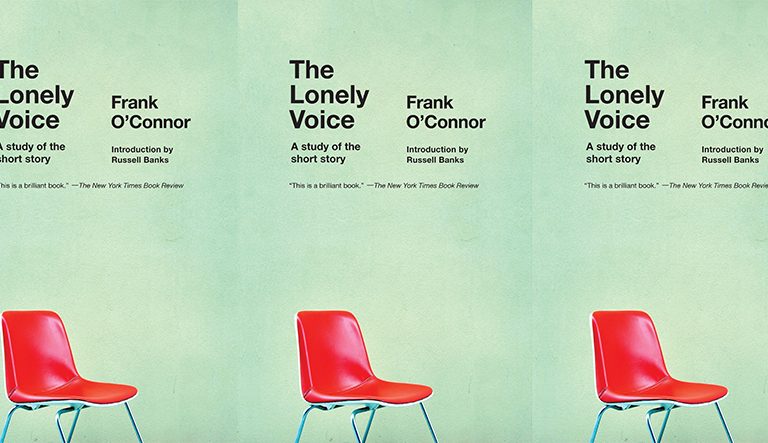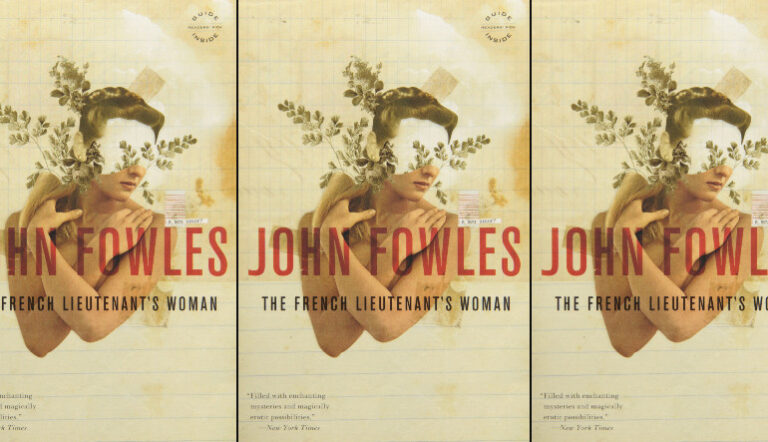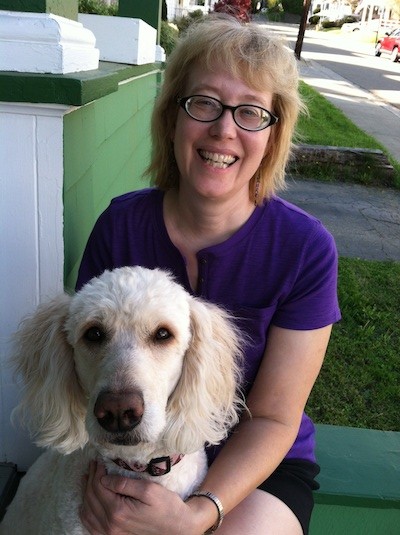Reading the Environment: Book Artist Melissa Jay Craig
It’s a digital age, but we’re still mad for paper! Even as readers embrace the connectivity and convenience offered by iPads and Kindles, there are still many good reasons to celebrate a book’s physicality. In Ploughshares’ Book Arts series, we’ll be looking at some of the artists, curators, and craftspeople who work to keep things fresh and relevant.
Whether she’s rescuing and repurposing discarded mass-produced paperbacks or harvesting wild plants to make her own paper, Melissa Jay Craig’s always discovering new “reading materials” in her environment.
Working her own kind of alchemy, the award-winning, Chicago-based artist has transformed these natural and manmade materials into sculptural, book-like hybrids: delicate, leafy books that bud, blossom, and decay with the seasons; poisonous-looking “bookshrooms” delivering pointed political statements; canned paperbacks that become trash after they’re consumed; and a single, poignant volume that mirrors the artist’s own hearing loss.
I interviewed Melissa Jay Craig via email earlier this month to learn more about the methods behind her fascinating body of work.
PSHARES: Much of your artwork concerns reading: both the printed words in books and the wordless communications in nature. Are you telling us “books” are everywhere to be read?
MJC: It’s not so much that “books” are everywhere; it’s more that I want to point out that we are always “reading.” We’re taking in, processing and responding to information everywhere, constantly.
Reading doesn’t just occur when we’re sitting and staring at a printed page or backlit screen. We’re reading each other’s faces, postures, body language. If you can hear, you’re reading the tone of voice. We all make judgments and decisions based on those things, often much more than on the words spoken.
Likewise, we “read the room,” the mood of a crowd. We read the weather. To me, our intuitive reading abilities are the most intriguing aspects of our intelligence. They fascinate me.
We can also read our environment, and when we are aware of what we read, we’re giving it our attention, not ignoring it. I combine books with forms found in nature partially to situate my readers within the cycles of nature, where we all ultimately exist, but too often forget that we do.
PSHARES: Your piece, Manifest, O, addresses a specific challenge you’ve faced “reading”: that of losing your hearing. How has your deafness informed your work?
MJC: Manifest, O was an attempt to share the experience of losing most of my hearing by making it visual in book form, so that the difference between “reading a book” and reading this book is the point of reference, the key.
Only the opening sequence has an image of eyes; then it progresses through four of the five senses, minus ears. When you page through the book, you are reading much more than the holes that have replaced the letters. The paper feels fragile, thin. It’s cockled and wrinkled, very different from a printed page. The colors are dull, muddy, so close in tone as to become almost a drone, but with restless, shifting patterns of intensity that don’t resolve into anything. The paper is slightly translucent, and as you turn the pages, you can see the drawings of mouths appear mistily, and portions also show through the “text holes.” You come to the page with a drawing, the mouth flashes its shape, repeats slightly altered on the back of the page, and disappears. You wade through more confusion of muddy, monochromatic, random pattern, searching for the next drawing, the next hint. That’s how I hear: Reading lips through a dull haze of indistinct, mostly meaningless sound.
As for how deafness has affected my work in general, losing one sense can bring awareness of information from the others into sharp relief, which is a large part of my interest in the ways we “read.”
PSHARES: In your work, (S)Edition, 99, curious book-like objects seem to spring up like so many fungi after a heavy rain. Why so many “books”? (And is there any significance to the number 99?)
MJC: (S)Edition is really a single book that consists of the entire edition as an installation. It’s kind of a reflection on my politics, or on my frustration with politics, both in the larger world and within the small book arts world. It was made during a time I felt I needed to challenge each, and the best way for me to do that always is to make some work, rather than to present yet another paper at yet another conference or be yet another body in yet another demonstration.
Fungi are agents of change; they exist underground, concealed from us until they burst into fruition, surreptitious entities that play a role in breaking down and clearing away other dying organisms. Historically, books—and paper pamphlet booklets—have done exactly that, spreading the ideas that have toppled governments and rearranged social order. Even in this internet age, books are still banned all over the world from fear of the ideas they contain.
Back in the little book arts world, sculptural books and/or books without text are often belittled, and the critic who first insisted “artists’ books are not artists’ books unless they are part of an edition of at least 100 copies” was also one of their vocal detractors. I knew I wanted a large number of fungi-books (my friends and I call them bookshrooms) in the installation to suggest a demonstration, a movement “going viral” and to almost overwhelm the viewer, and then I remembered that quote, so of course I settled on making an edition of exactly 99 copies.
PSHARES: With the advance of technology, many would say that paper-and-ink books are becoming an endangered species. Where do you see book arts going in the future?
MJC: I have a love/hate relationship with the book arts world. I love that every time I begin to define what an artists’ book is, something comes along to challenge it. I hate the territorial bickering and the factionalism that that very lack of definition produces. I don’t see any of that changing much, just that the number of factions will increase with the rise of e-readers.
One thing I do think about is how the cultural significance of The Book will change. There’s a lot of talk about how young generations have lost the ability to write by hand, because they’ve gone straight to the keyboard. Right now, an image of an ink-and-paper book has a global meaning. In a hundred years, that could very well disappear completely, and devolve into something that’s simply a curious historical artifact, like medieval armor. We know what it is but it has no significance in our current lives. That, much more than any current debate, is what will change the book arts.


